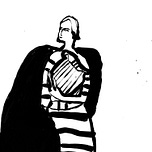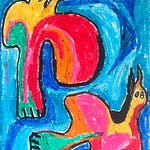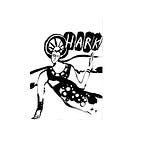In The Mysticism of Sound & Music by Indian Sufi Hazrat Inayat Khan (1882-1927), he relays an old legend from the East:
“God made a statue of clay in His own image, and asked the soul to enter into it. But the soul refused to enter into this prison, for its nature is to fly about freely, and not be limited and bound to any sort of captivity. The soul did not wish in the least to enter this prison. Then God asked the angels to play their music and, as the angels played, the soul was moved to ecstasy. Through this ecstasy - in order to make this music more clear to itself - it entered this body.”
Khan goes on to say that this parable explains two truths, one being that “freedom is the nature of the soul” and the next being that “the only reason why the soul has entered the body of clay or matter is to experience the music of life, and to make that music clear to itself.”
I wasn’t thinking of any of this the day that I sat at the Mellotron and discovered the “8 voice choir” setting. One piano key became a whole chorus of strange “ahs”. It sounded ridiculous and grandiose. It was funny and fun to sing along to those boxed voices, but then suddenly this oddly lofty song came through. Bits and pieces of my patchwork cosmology often bleed through when I write. I remind myself of things I’ve read before. Such as Peter Selg’s Unbornness - a book based on the teachings of Rudolf Steiner in which Steiner says,
“Not only do we pass through the gate of death as immortal beings, we also enter through the gate of birth as unborn beings. We need the term unbornness, as well as the term immortality, to encompass the whole human being. We are just as unborn as we are immortal” (Rudolf Steiner)
A friend recently asked me if I believed in life beyond death & without hesitation I said I do. My self-righteous, materialist inner 16 year old would have been appalled. I have no proof, no science to back up my belief, only years of anecdotal evidence and childlike hope. It makes me lighter to believe, much lighter than I was at 16. It helps me make sense of senselessness. It paints the numbers of my life with meaning.
I like thinking that there was something my unborn beingness wanted to accomplish & that the job of my amnesiac self is to figure that out. It all becomes a game and I play it with everything from dire seriousness to unhinged joy and all the shades of apathy in between.
“The true way of progressing through music is to evolve freely, to go forward, not caring what others think, and in this way, together with one’s development in music, to harmonize the life of one’s soul, one’s surroundings, and one’s affairs.” - Khan
The responsibility to create a less troubled, chaotic world relies more on the individual than we might like to believe. Instead of being overwhelmed by the injustices, bitter from blaming the powers that be, perhaps if one becomes “musical in one’s thoughts, words and actions,” one could curb the tragedy of the world which comes only from “lack of harmony, and harmony is best given by producing it in one’s own life.” (Khan)
“How To Be Human” is from the perspective of a soul entering into the prison of body, in search of the promised song, wondering how to make its life harmonious. This is a question for all humans. Music is not specially reserved for the musician. Our nature is musical.
∞∞∞
The song is an outtake from my *soon to be announced* new album (made in collaboration with Guy Blakeslee).
You can also find it on the recently released Leaving Records compilation assembled to support LA fire relief efforts: Staying: Leaving Records Aid to Artists Impacted by the Los Angeles Wildfires
∞













Share this post